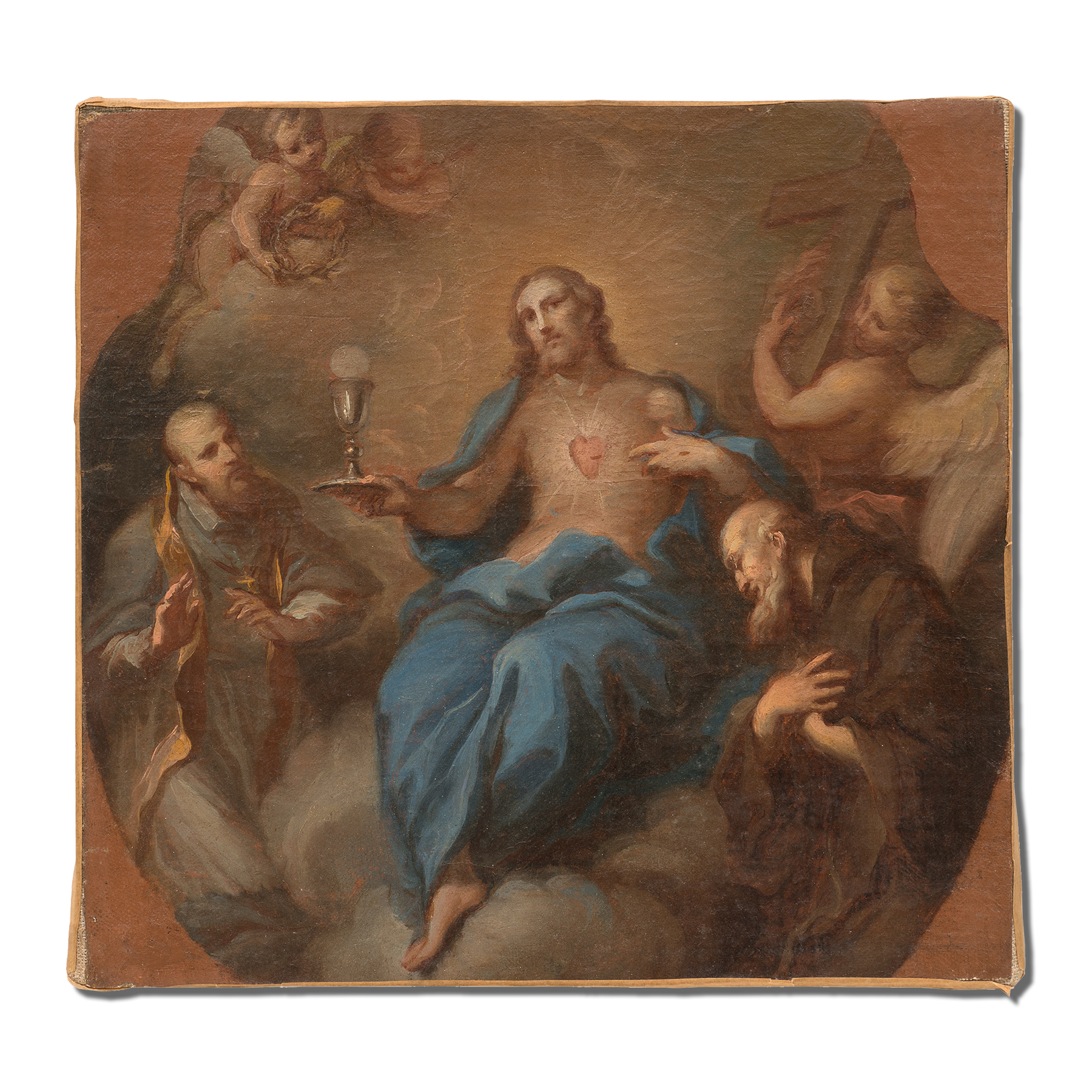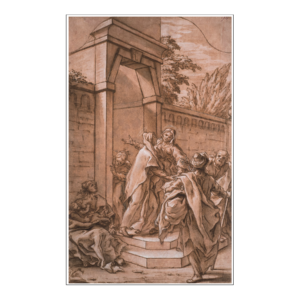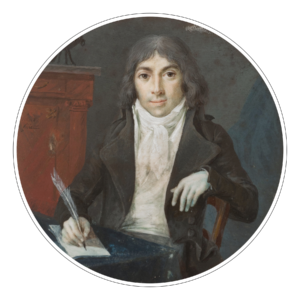Philippe Sauvan
Arles 1697 – Avignon 1792
Christ Surrounded by Two Saints with Angels Carrying Instruments of the Passion
Oil on canvas mounted on canvas. Originally, the canvas was pasted onto another canvas. On the verso, a saint’s face and the paws of a dog are depicted with an inscription at the top left:
Esquisse d’un tableau de Ph. Sauvan. Le tableau appartient à M. de Forbin-Janson.
(Sketch of a painting by Ph. Sauvan. The painting belongs to M. de Forbin-Janson).
245 x 264 mm – 9 5/8 x 10 3/8 in.
Provenance: Collection of Marquis de Forbin-Janson.
Born in Arles, Philippe Sauvan began his apprenticeship with his father Honoré, a painter and gilder. In 1714, he entered Pierre Parrocel’s studio in Avignon. After a sejour in Rome, Sauvan returned in 1718 to settle in Avignon and remained there permanently. Benefiting from commissions from the city’s religious communities and brotherhoods, Sauvan’s work developed primarily in the domain of religious art, though he also placed importance on portraits. After the tragic period of the 1720 plague, he became the most famous painter working in the city of Avignon and its surroundings.
This sketch shows Jesus Christ seated on a bank of clouds, holding a chalice and the Host in his right hand, while pointing with his left hand towards his radiant, pierced heart. Above him, two angels carrying instruments of the Passion – the crown of thorns and the cross – surround him. Below, two saints, undoubtedly a Dominican and a Franciscan, frame the figure of Christ.
This representation illustrates devotion to the Sacred Heart of Jesus – a symbol of his mercy and love of men – with foundations in the Gospel of John and developed under the leadership of Saint Jean Eudes[1] from the 17th century onwards. During the scourge of the plague that raged in and around Marseille between 1720 and 1722, adoration of the Sacred Heart of Jesus Christ spread throughout the kingdom following processions organised by Monseigneur de Belsunce[2] who consecrated the city of Marseille to the Sacré-Coeur[3]. Neighbouring cities such as Toulon, Aix, Arles and Avignon devoted themselves to this fervour and the brotherhoods grew.
[1] Representations of the Sacred Heart of Jesus first appear in the 17th century following the teachings of Saint John Eudes, who celebrated the feast for the first time in 1672. At the same time, in the monastery of the Visitation in Paray-le-Monial, Saint Marguerite-Marie Alacoque witnessed apparitions of Jesus where he showed her his heart (1673/1675).
[2] https://fr.wikipedia.org/wiki/Henri-Fran%C3%A7ois-Xavier_de_Belsunce_de_Castelmoron#cite_note-3
[3] Ex-voto painting, Invocation du Sacré-Cœur pour la cessation de la peste à Marseille (Invocation of the Sacred Heart for the Cessation of the Plague in Marseille), parish church of Le Puech.






